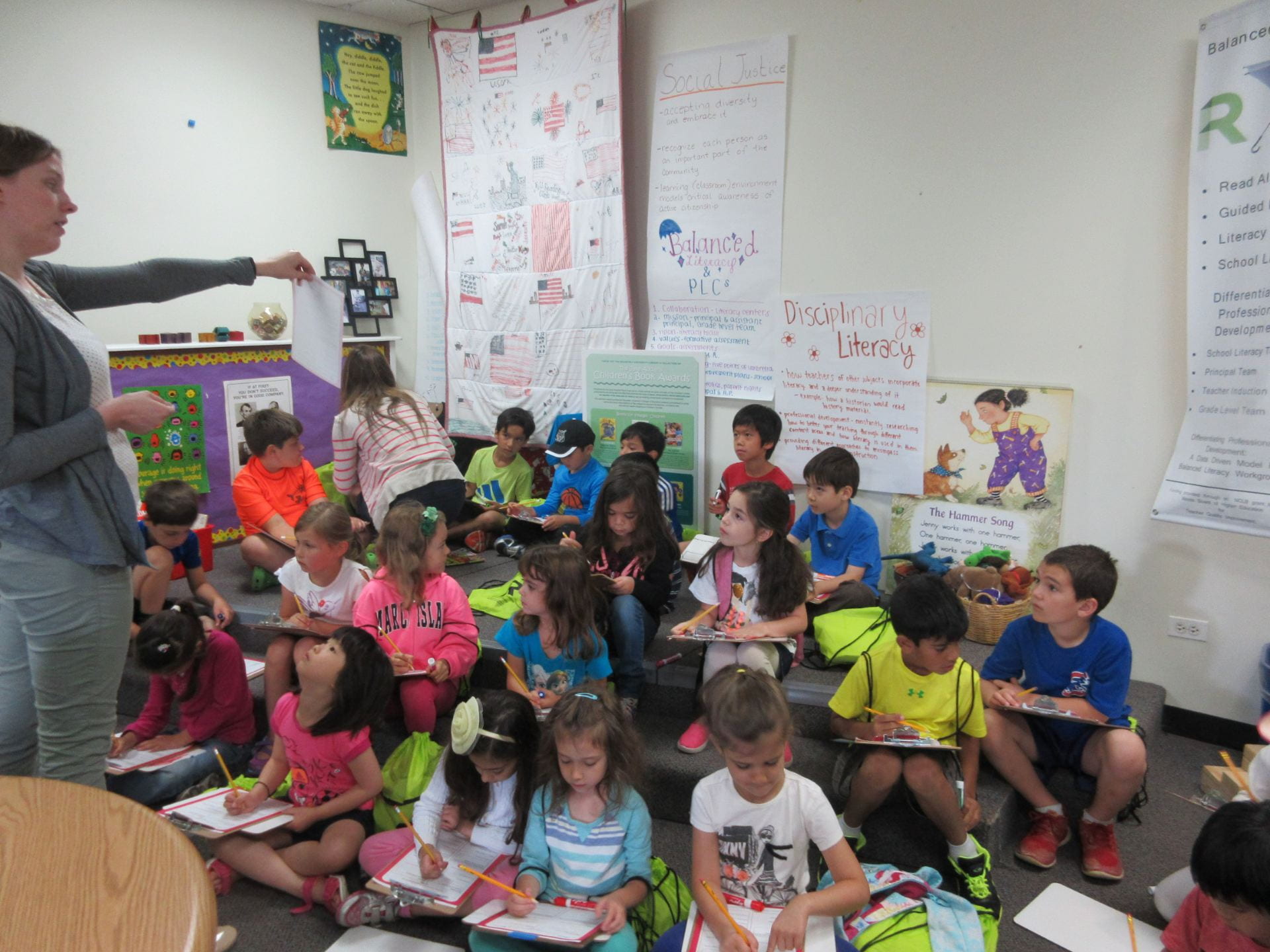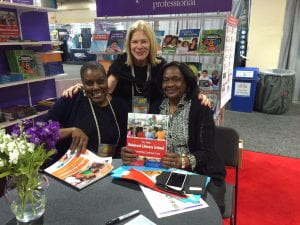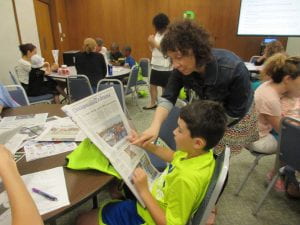Bringing New Balanced Literacy to Your Classroom
Changes in educational state standards led to drastic shifts in literacy instruction and philosophy in order to meet the demands of the Common Core State Standards (CCSS). Hence, we began tedious data collection through classroom observation and refined our program and approaches in order to create a new balanced literacy school with the CCSS. The purpose of our work is to provide schools a model of balanced literacy involving components necessary for literacy development and enrichment. Some instructors have knowledge of new balanced literacy and may use this site as a connection to classroom materials and other resources. However, many may be new to the concept, which is quite complex for beginning instructors. In order to provide a well-rounded and thorough background of balanced literacy, and its proven effectiveness in the classroom, we will provide you with a summary of the model’s development.
You will find the symbolic new balanced literacy “umbrella” created by Rudell, Rudell, and Singer (1994) is widely used as a metaphor “to explain and represent this complex theory” and its numerous components in a more organized manner.
Also, use our printable resources in your classroom! For questions about how to implement the NBL program in your classroom, please use our downloadable information sheets or reach out to a member of our team.
For those interested in pursuing a degree, learn more about Roosevelt’s Masters in Literacy Leadership.
Instructional Shifts to meet CCSS
 The CCSS’s mission statement indicates that the standards are to “provide a consistent, clear understanding of what students are expected to learn, so teachers and parents know what they need to do to help them” (Policastro, 2015, pp.33). The shifts of standards greatly impacted the instructional shifts which led to the re-defining of the Balanced Literacy Program in order for success with the common core in ELA/Literacy.
The CCSS’s mission statement indicates that the standards are to “provide a consistent, clear understanding of what students are expected to learn, so teachers and parents know what they need to do to help them” (Policastro, 2015, pp.33). The shifts of standards greatly impacted the instructional shifts which led to the re-defining of the Balanced Literacy Program in order for success with the common core in ELA/Literacy.
The Three Common Core Shifts:
- Regular practice with complex text and its academic language
- Reading, writing, and speaking in evidence from the text, both literary and informational
- Building knowledge through content-rich nonfiction.
 In the New Balanced Literacy Program, we have taken these shifts and integrated them into all the tenets of balanced literacy. These shifts do come with a sense of urgency but the recognition of the capacity building and professional development required to implement the NBL program is important. We took each of the shifts and changes of the CCSS and aligned them with tenets of the balanced literacy to create the following changes:
In the New Balanced Literacy Program, we have taken these shifts and integrated them into all the tenets of balanced literacy. These shifts do come with a sense of urgency but the recognition of the capacity building and professional development required to implement the NBL program is important. We took each of the shifts and changes of the CCSS and aligned them with tenets of the balanced literacy to create the following changes:
- New Read-Alouds – The New Read Aloud Classroom Inventory and Teacher Tips
- New Guided Reading into Language – Close Reading Account for Students
- Language and Literacy Centers – Debate Centers
- Word Walls to Language Walls – Language Walls
- New Independent Reading – Suggested Books and Lesson Planning
- New Independent Writing – 4-in-1 Literacy Block
- New Classroom Libraries – Administrators Creating a Balanced Literacy School
What Does Common Core look like in a New Balanced Literacy Classroom?
In addition to the instructional changes, the following are important in creating a NBL classroom:
- The New Guided Reading: Guiding Language into Reading: Matching books to readers means finding texts that require readers to work out problems or lean new strategies. Good readers go beyond the text to interpret, summarize, synthesize, and evaluate information. Check out Guided Reading a presentation created by Debra Fisher, a first grade teacher at one of our NBL partner schools!
- New Guided Language into Reading and Writing: The teacher needs to observe how students are reading, thinking, and comprehending text on a daily basis through small-group instruction. This daily instruction also allows teachers to collect data through running records or anecdotal notes in order to make adjustments in text selection or grouping methods. Grouping in the new model are based on: the qualitative aspects or purposes for reading; the reader, the motivation and experience the student brings to the text; and the quantitative aspects, such as the text’s style and format. Teachers may guide more complex instruction and use language to support learning by using units that are based on themes. Begin these units with important questions students was to discuss.
- Book Clubs: Used as a way to guide language and reading with the goal of creating habits of thinking supported by evidence and not by personal opinion. Book club can begin in the primary grades but works best in the uppers grades as a way to generate classroom discourse while covering all the CCSS instructional shifts, allowing for close reading, finding evidence, and developing arguments.
- The New Word Walls to Language Walls: To help enrich conversation and evolve and expand from single words to larger discourse, the teacher can pause during guided reading time and specifically highlight the discussion with the language wall. Capture the discourse through words, images, photographs, and other means to communicate the ideas, concepts, and beliefs about the lesson being taught.
- The New Language and Literacy Centers: These centers should allow for open-ended inquiry, engage students in tasks as active learners, and be a part of the daily ongoing classroom routines. In the new model, students write research-based reports at centers while generating rich discussion and conversation with others.
- The New Independent Reading and Writing: Don’t forget about narrative! In the new model, there is emphasis on persuasive writing but there is still space for narrative. Children’s life stories need to be celebrated, appreciated, and most importantly, documented. Download family stories interview and family narratives created by Vaunda Micheaux Nelson, author of The Book Itch, for information on using a child’s story in developing their reading, writing, and research skills!
- The New Classroom Libraries: Garage sales, used book stores, public libraries, and dollar stores have a surprising and affordable selection of books. In the library collection, 50% of text in kindergarten, and 70% in grades six and up, should be informational and challenging. Check out The New Classroom Libraries for ideas in your classroom!
Check out our Creating Balanced Literacy Schools: Developmental Moments for more details about these developments.
What Does Assessment look like in a New Balanced Literacy Classroom?
 Assessment is seen as an ongoing part of the daily routine merging with instruction within the classrooms. Assessment is a critical component of the decision-making process within balanced literacy and needs to be supported through systematic data collection.
Assessment is seen as an ongoing part of the daily routine merging with instruction within the classrooms. Assessment is a critical component of the decision-making process within balanced literacy and needs to be supported through systematic data collection.
In the New Balanced Literacy program there are five dimensions to assessment:
- Teacher Observation and Anecdotal Records
- Running Records/Miscue Analysis
- Writing Samples
- Student Journals
- Student Interviews/Inventories
Teacher Observation and Anecdotal Records*
- Completed during read-alouds, guided language into reading, independent reading and writing, and during work in centers
- Teachers observe who is paying attention, responding and answering or asking questions, and listening and comprehension skills
- Problem-solving, argument, and persuasion skills can be observed as well
- Documentation of the conversation and discourse is important as children work with peers on teams
- Observe what habits children have gained and are developing
- Utilize daily notes as a planning tool and guidance for the next instruction needed for each child
*These notes are recorded as part of the anecdotal record, which contributes to a student’s overall formative assessments.
Running Records/Miscue Analysis
- Used to record the reading behaviors on new, familiar, fiction, or non-fiction text
- Taken frequently in order to learn about a child’s different patterns of correct reading, errors, and meta cognitive behaviors
- Similar to miscue analysis
- Suited for all genres and grade levels
- Assembled over a student’s school career
- Immediate and valuable assessment and determination of the student’s strengths and weaknesses
- Conveys insight into the child’s thinking and reading process
Writing samples
- Offer important data about writing competencies in areas such as idea generations, organization, style, and conventions
- Analyze the work of individual students, small groups, and a whole class and use the data for differentiating instruction
- Students can assess their own writing and set goals for themselves
- Present writing samples of high, medium, and low scores during grade-level meetings for positive and useful feedback
- Concentration on lesson objectives keeps the process and discussion positive and focused*
*We strongly suggest that either grade-level teams or a school literacy teams construct writing rubrics for different genres and/or grade levels for assessing writing samples.Rubrics can also help define lesson objectives and make reporting a student’s strengths and areas of improvement easier within a classroom and across grade levels.
Student journals
- Used during the 110 Minutes of Literacy
- Can also be a source of data for teachers to periodically collect and evaluate
Examples of journal writing include:
- Reading Logs: Students add a list of books that have been read and books they want to read. This data provides information about the amount and genres read.
- Response to Reading: This is a perfect time to have students include evidence to answer specific questions. The questions can be more complex so you may evaluate whether the child is capable of gathering evidence from texts independently.
- Notes About Books/Reading Strategies: This is a good place for students to be reflective about what they are learning and you may gain insight into their learning.
- Vocabulary Words: Encourage students to use these words in future writing. Students write the word, an original definition, and the sentence from the text. Also useful for struggling readers and ELLS.
Student interviews/inventories
Teacher-created interviews/inventories are, in our opinion, more effective because the teacher is able to tailor the questions to meet specific needs. Some basic questions to ask students are:
- Do you like to read and/or write? Why or why not?
- What is your favorite part of the day in school? Why?
- What books are you currently reading?
- Do you think reading and/or writing is easy or hard? Why?
- What is your favorite book?
- What series or authors do you read or have you read?
Emergent readers may need additional assessments which may cover:
- Concepts About Print
- Phonological Awareness
- Phonics and Word Recognition
- Developmental Spelling
- Fluency
What are teachers saying about NBL in their schools?
“[Students] are more comfortable and it really helps that they are driving their own learning. The student-to-student feedback is very helpful and makes [students] reflect on themselves. Some of the students are only in third grade and are really into [student-to-student] feedback. Also, I really love the interactive read-aloud and making the point to do it everyday is really special because the students are very engaged and it’s guided so the students are good about answering questions and accessing their higher thinking.” – Trista Bialorucki, First and Second Grade Teacher
” I initially had hesitant feelings about [NBL] and thought: How is this going to look in a High School program? There wasn’t much to tweak or change about the [NBL] program and it is not that far off from what I would usually do with my classroom. I have gained so much insight into how to run a classroom through the literacy centers. The students do their own inquiry, research, answer their own questions, collaborate with each other and draw all of their conclusions from the text to produce their writing. [NBL] is not just for younger kids. I can definitely use this with my older kids.” – Steven Hong, High School ELL Teacher